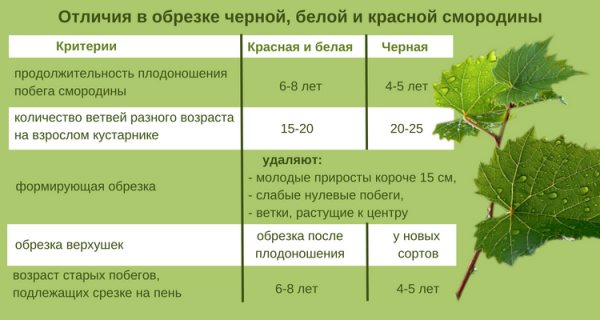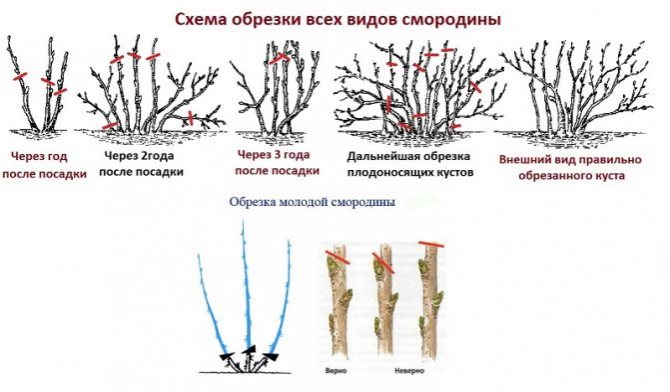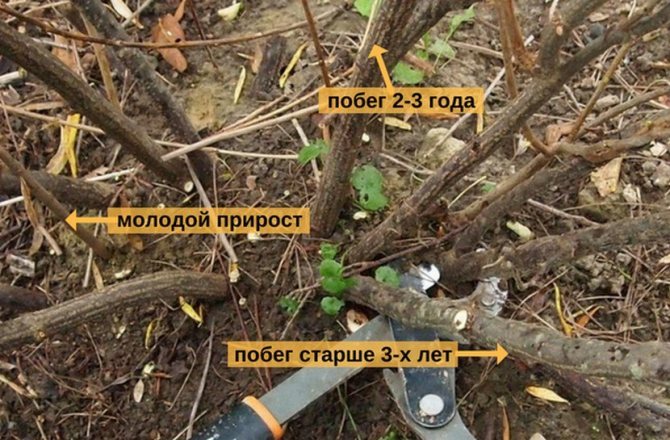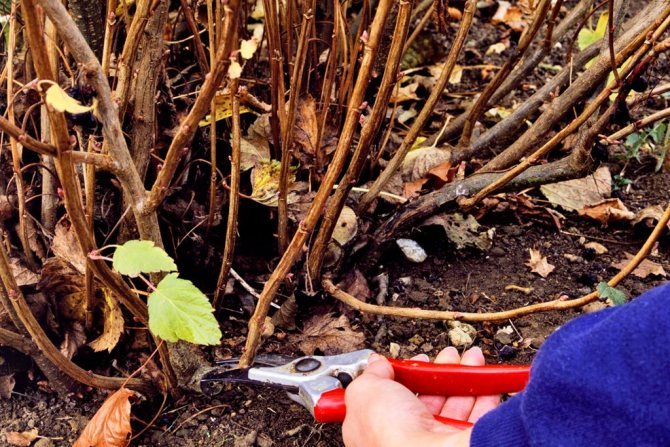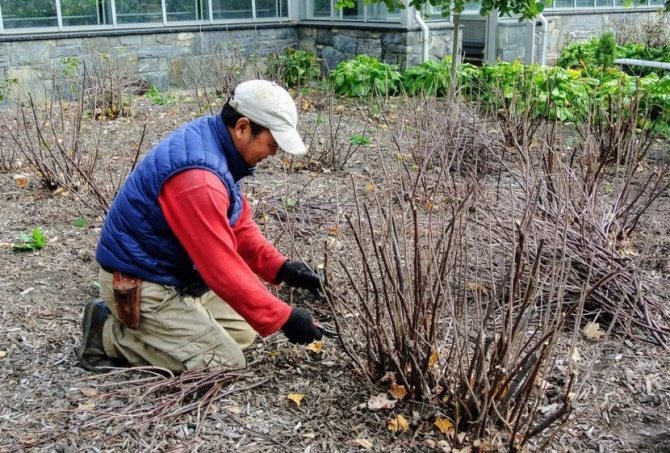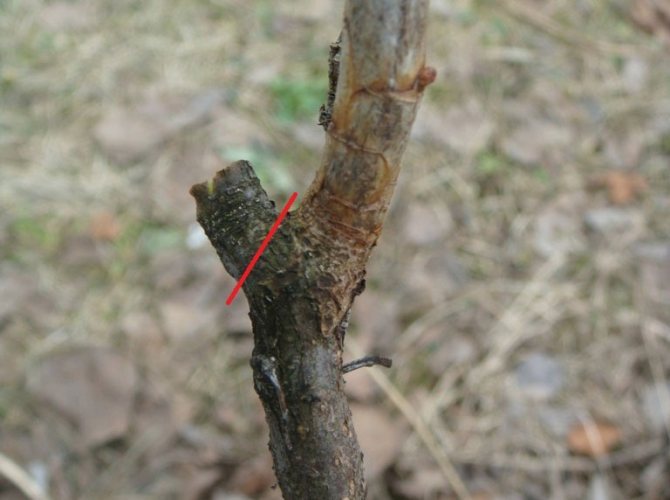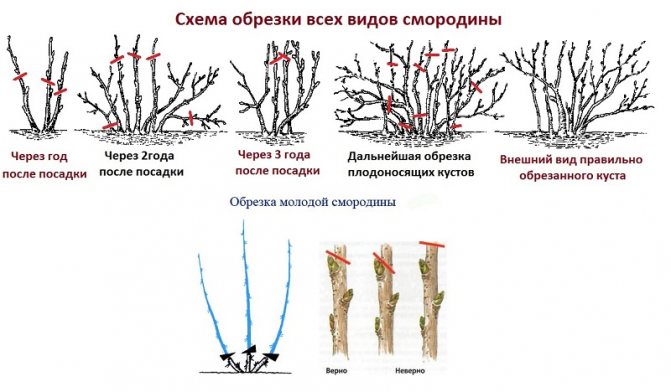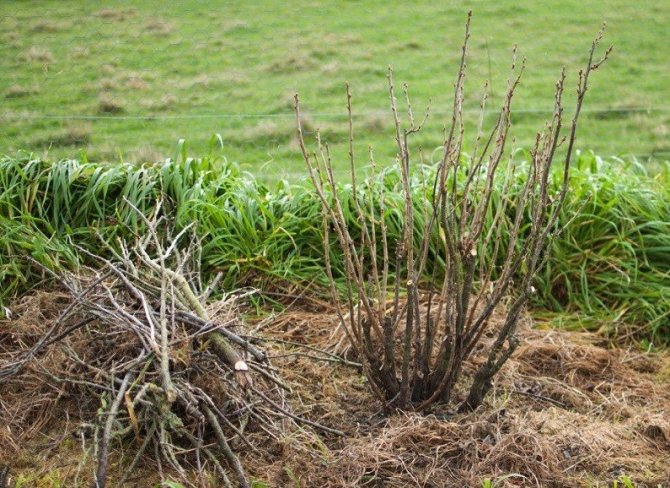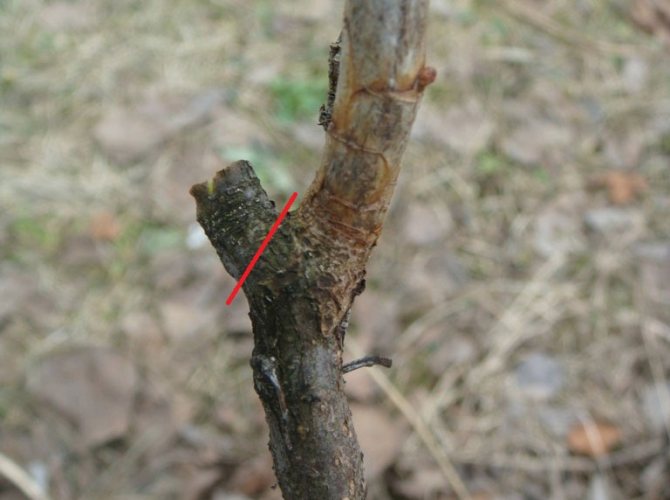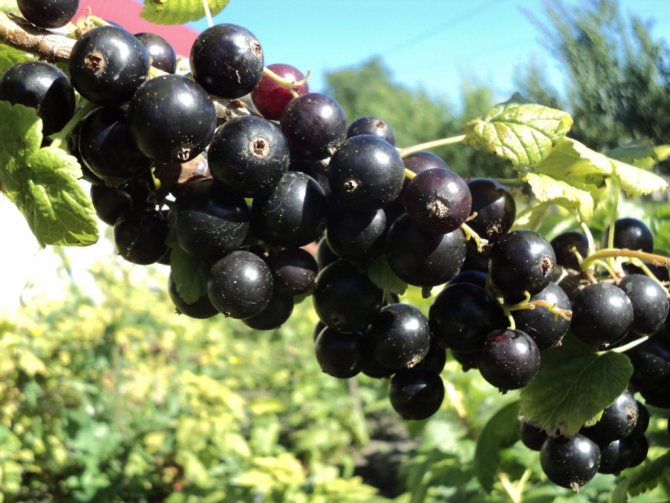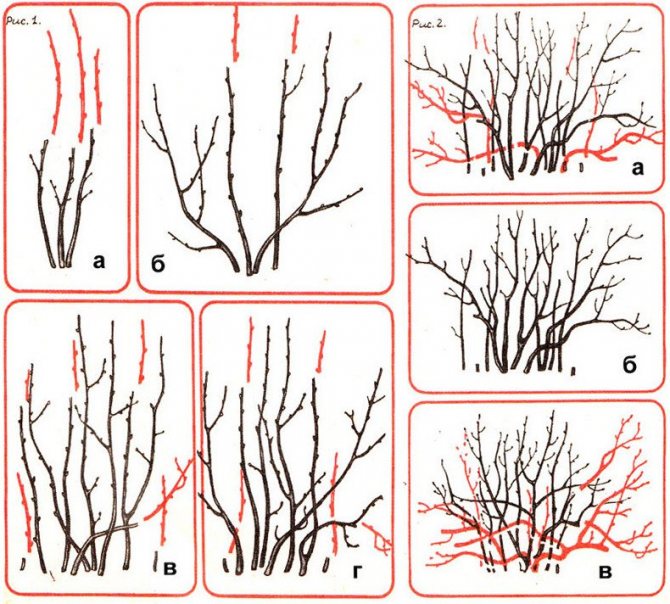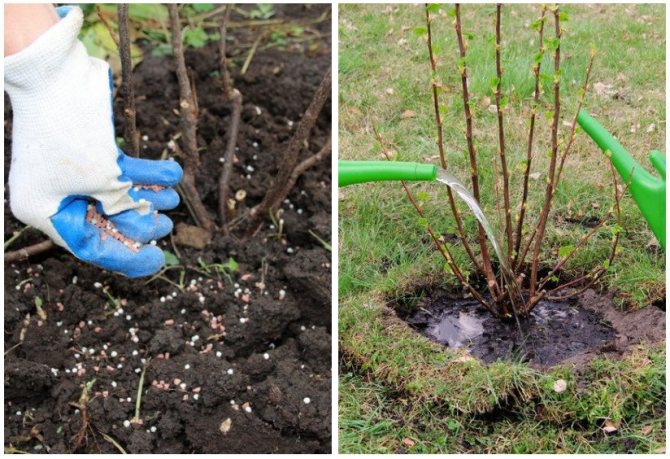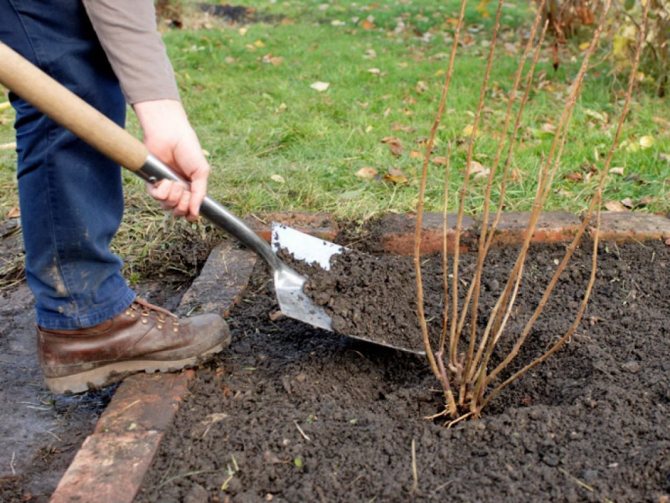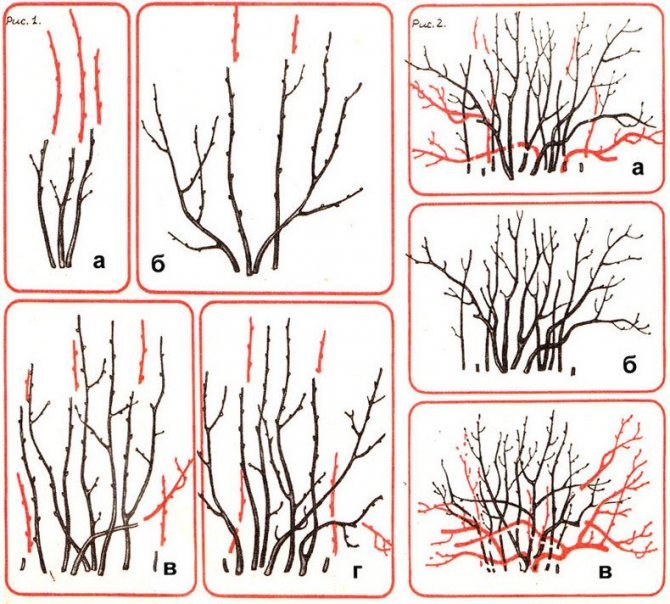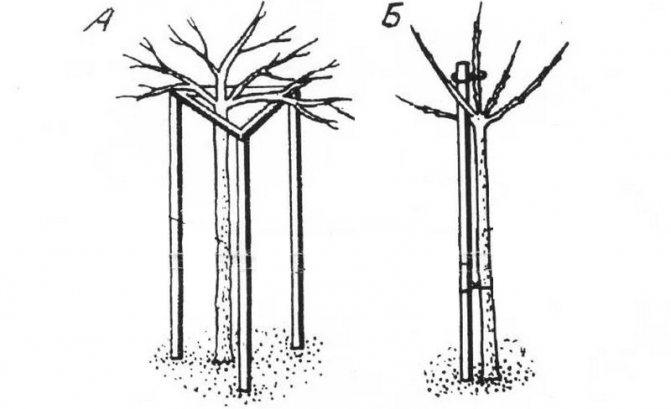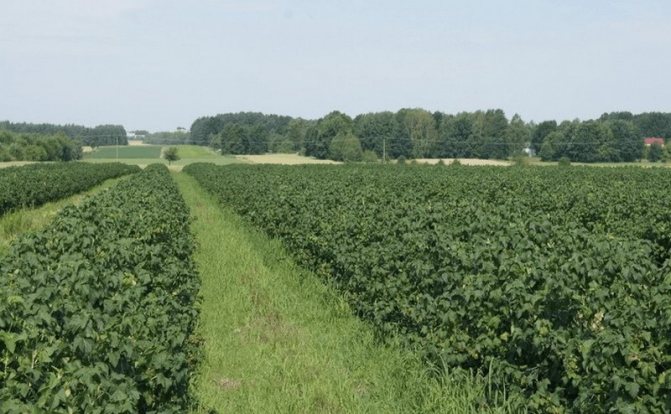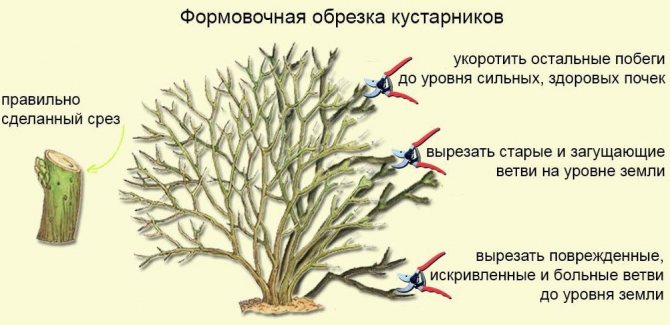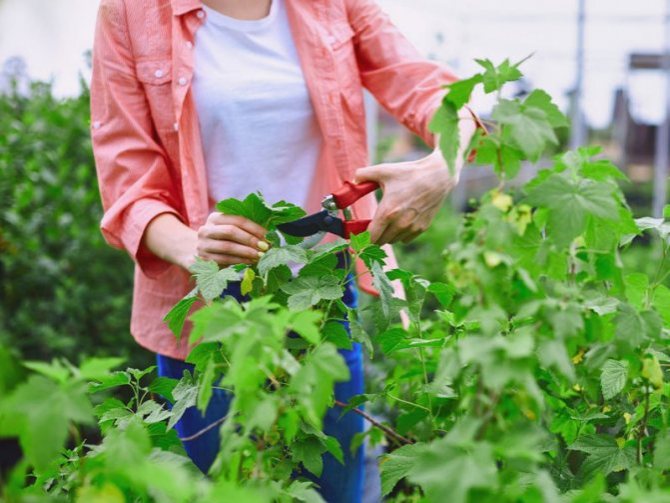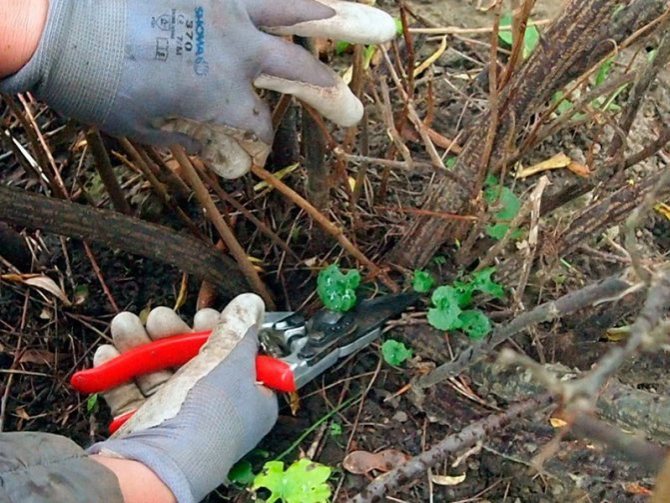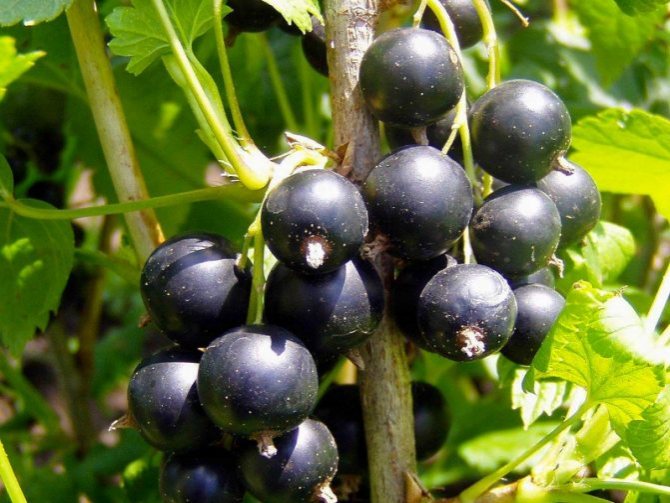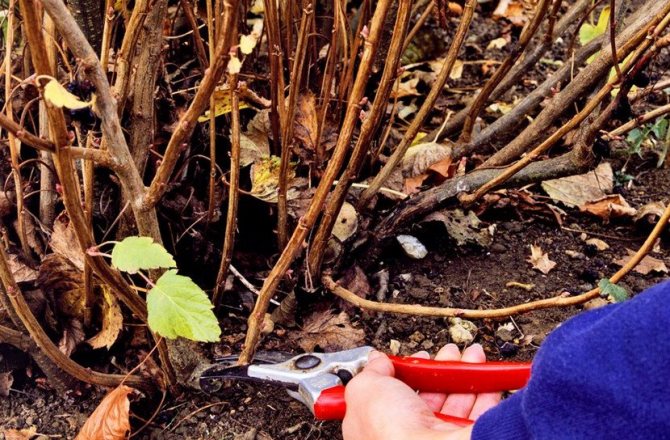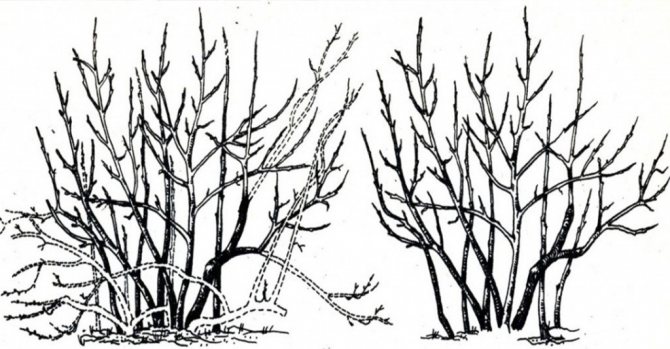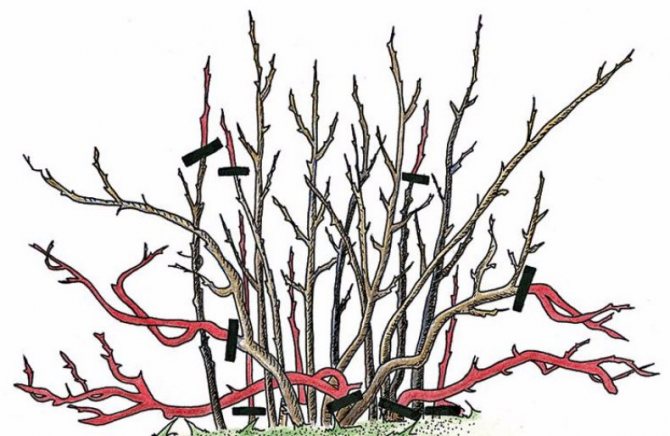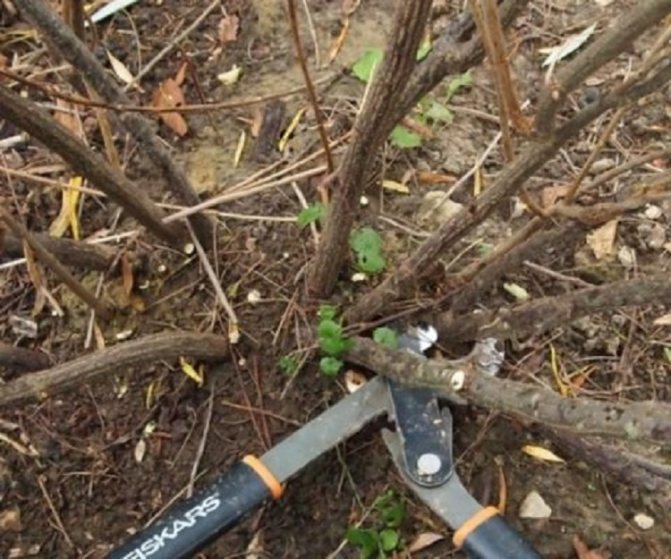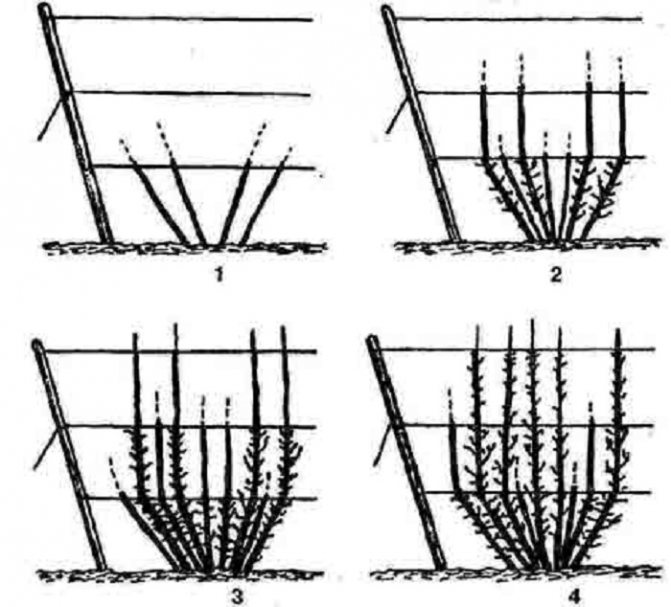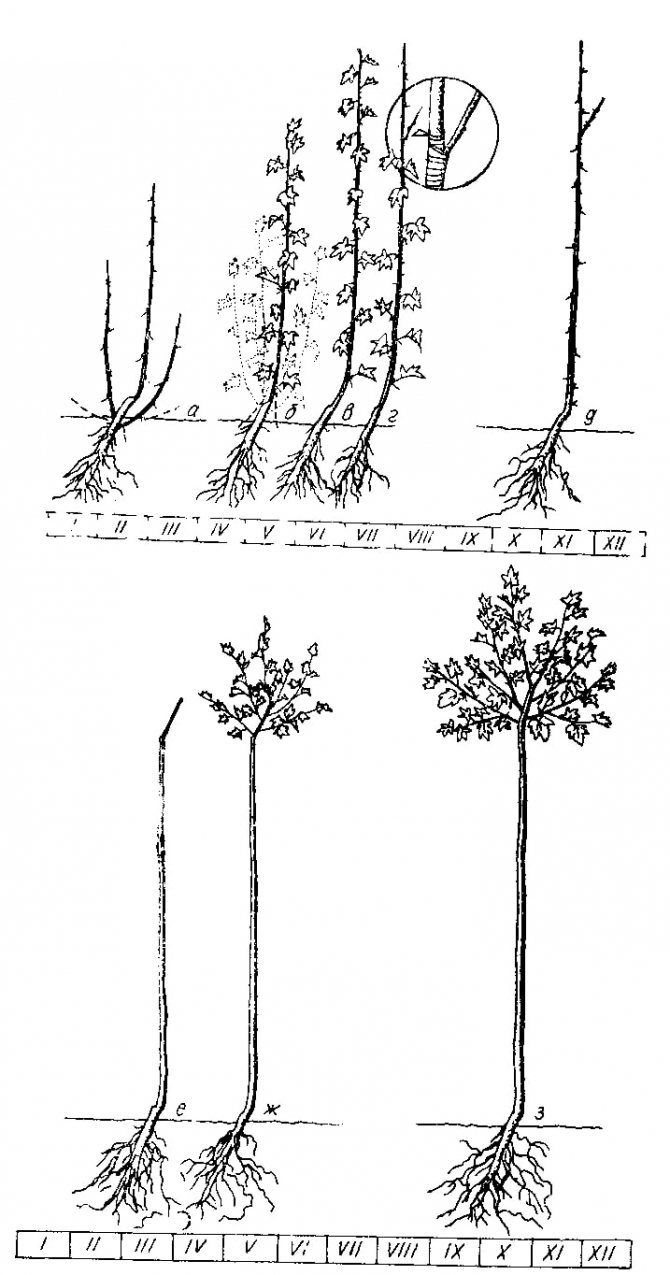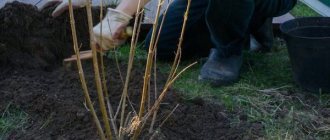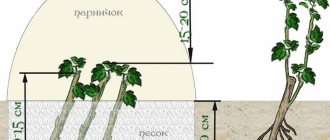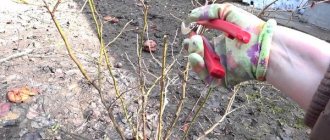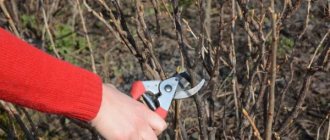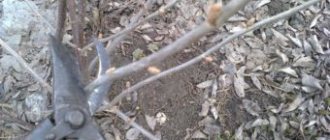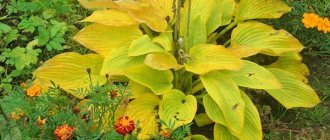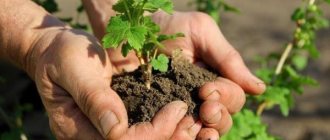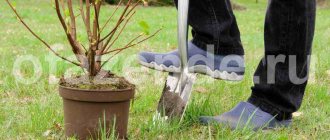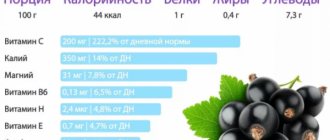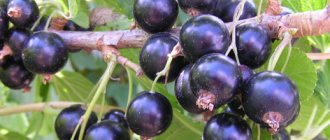- Garden
- Berry
- Pruning black currants in the fall - preparing your favorite berry for winter
06. 11. 2015
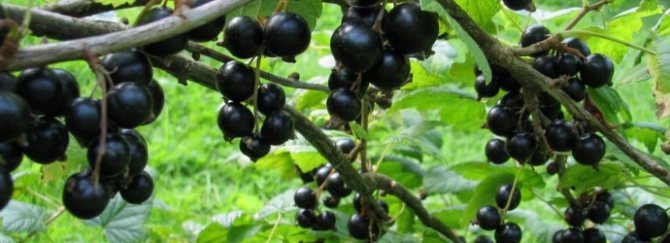
It is not enough just to plant berry bushes and water them from time to time, they require full care, if, of course, you count on a decent harvest every year. This also applies to the beloved black currant, from which so many beautiful blanks can be made. And to taste this berry right from the bush is to receive a well-deserved reward for your efforts. And this is helped by the autumn pruning of the shrub, which has its own characteristics.
- 2 What, when and what should be trimmed?
- 3 Features and procedure
3.1 Video: autumn pruning of black currant
Purpose of the procedure
Pruning a fruit tree is done in pursuit of several goals:
- Stimulation of the formation of young shoots. As a result, a rejuvenating effect is achieved by replacing old, less productive shoots with new ones that are capable of producing crops with full force.
- Normalization of crown aeration and supply of the required amount of light. In the course of cutting shrubs, crowding is eliminated, the risks of infectious diseases are minimized.
- Increased productivity. In the absence of old branches, the plant uses its forces not to provide them, but to form and further develop the ovaries.
- Pest prevention. With a systematic correction of the green mass, the likelihood of damage to healthy segments by insects is minimized.
- Facilitate harvesting.
- Increase the fruiting period by up to 20 years.
How to cut currant seedlings
Before planting a currant seedling, the tops of all shoots are cut off. By the end of the first year of the growing season, the young plant will form 5-6 new shoots. If this is not done, then the shrub will grow sprawling, without a good harvest.
Rules for pruning seedlings before planting in the ground:
- The tops of the seedling are cut off, leaving 2-3 buds.
- If the bush has more than 4 shoots, then it is recommended to cut off the extra ones in order to get a good growth during the growing season.
- The height of the cut currant seedling should be no more than 40 cm.
Benefits of Autumn Pruning
There are many disputes about the most favorable time for pruning, due to the diversity of the climate in Russia.
In the spring. The downside is the tight deadlines. They should be carried out before the formation of fresh buds, which is not always realistic due to natural conditions. Cutting during sap flow is fraught with a violation of the development cycle of the bush. But such a correction allows you to correctly assess the degree of pruning, because the branches are not hidden by the foliage.
In summer. Shearing is done only in extreme cases - if it is necessary to eliminate infected shoots or to stimulate fruiting by pinching the shoots for a maximum of 2 buds. However, this procedure has more negative consequences:
- wounds remain moist for a long time, which helps to attract pathogenic bacteria;
- the currants may not have enough strength to grow new shoots, so the next season the risk of getting a weakened berry increases;
- young shoots do not have time to prepare for winter and die as a result.
In the autumn. Currant pruning is carried out exclusively after the sap flow has stopped, which allows the culture to calmly transfer the procedure and enter the hibernation period without a stressful state. In case of uncertainty, it is allowed to cut the branch - if drops of liquid are noticeable, the date of the haircut is shifted by a week.
Provided the procedure is correct, new shoots are stimulated, which by spring are successfully replacing unproductive ones. In addition to rejuvenation, this relieves the plant of parasites that can penetrate the soil before the onset of frost and subsequently harm healthy bushes.
Tips and Cautions
Branches that have served their purpose need to be cut flush with the ground or even slightly lower, since the stump remaining above the surface of the earth, or rather the core, can become a breeding ground for all kinds of infection.
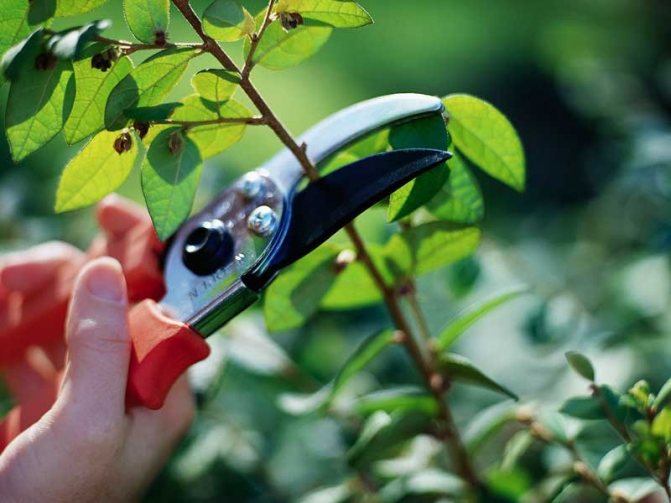

It is important to carry out autumn pruning before the onset of stable cold weather, it is often necessary to carry it out when the first snow falls.
Shoots damaged by pests are cut clean and burned along with the fallen leaves. Before proceeding with pruning, make a procedure. For example, the weak and thin ones are cut first, then the damaged ones, after them the old ones, etc. The work must be ordered. Be careful, because any mistake can ruin the bush.
The pruning procedure should be annual. All sections should be treated with a disinfectant and quick-healing compound.
It is important to carry out the procedure before the onset of frost. In the fall, the plant gradually goes into a state of dormancy, it takes some time for the sections to heal and recuperate in order to survive the winter. In the spring, it will be possible to carry out more detailed and detailed pruning in order to finally prepare the bush for the upcoming season.
I love the nature and beauty of the world around me, I highlight this in my articles and try to contribute to the implementation of the beautiful into life. Rate the article:
- 5
- 4
- 3
- 2
- 1
(0 votes, average: 0 out of 5)
Share with your friends!
Caring for bushes after pruning


After the autumn pruning, the bush must be prepared for a dormant period.
- The trunk circle is well spilled with solutions of nutrient mixtures.
- The branches are treated with lime, karbofos, colloidal sulfur or Bordeaux liquid.
- The soil is loosened, peat or sawdust is introduced into it for insulation.
If winter is expected to be harsh, it is important to pour at least 20 liters of water under each bush, providing the plant's root system with sufficient moisture.
These measures are required both for the currants of the first years of life, and for the old ones, after the rejuvenating pruning of the bushes.
Autumn pruning of currants is an important procedure that requires experience, which must be carried out taking into account the climatic conditions and the variety of the bush. If the technology is observed, it helps to achieve good yields for 8-10 years and longer, makes the berry more accurate, and prevents the appearance of diseases and pests.
Scheme for beginners
- During the first 5 years, currant branches are not cut off.
- On the 5th autumn, you need to cut off almost half of the branches of the bush: dry, affected by diseases and pests, broken, shading the crown. After the procedure, it is imperative to carry out a good feeding for the bush so that it gains strength for further development.
- After a year, about 20 new shoots are left, and all other shoots are removed.
- The next year, you can already remove the second half of the old branches, leaving 10 young shoots. Branches 5 years old and above are cut off.
- After pruning, a garden pitch should be applied to the cut sites.
Optimal timing
Despite the fact that autumn is more for the correction of currants, a number of other nuances should be taken into account that affect the speedy recovery of the bush.
Moon calendar
Focusing on the moon, you can determine the timing of summer cottage work. Descending, 3 or 4 phases are the best periods for a haircut.
The most favorable days in 2020:
- in September - 2, 5, 7, 9;
- in October - 1, 4, 5, 10, 29, 31;
- in November - 3, 7, 8, 11, 28, 30.
Growing regions
To determine the time of cutting currants in the autumn, it is worth considering the climatic conditions of the territory.
- The Moscow region is characterized by rapid soil freezing. Therefore, the events need to be completed by the end of October.
- In the Leningrad region, the procedure will begin on October 15.
- Siberia is characterized by sharp jumps in temperature, which results in faster preparation of plants for the onset of cold weather. The best time is the first days of September.
Pruning time: general and by region
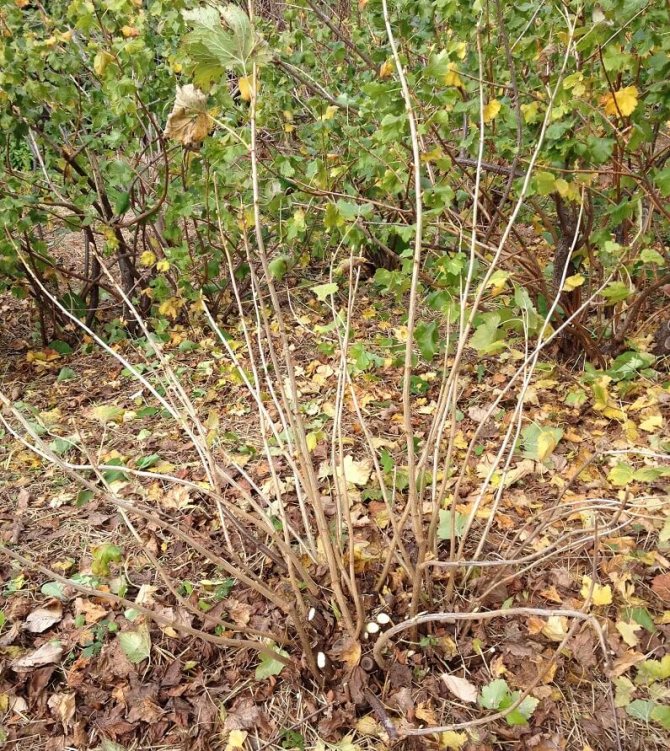

Agrotechnical measures to prepare currants for winter rest are carried out after the harvest has been harvested. Falling foliage is best removed and destroyed immediately so that pests do not settle in it, the foliage also becomes a breeding ground for diseases. And as soon as the currant drops the last leaves, you can start pruning. There are no exact dates, gardeners determine them independently, depending on weather conditions and varieties.
The cessation of sap flow is considered a sure sign of readiness: it is easy to see by breaking the branch.
- First of all, pruning is carried out in Siberia, where frosts can begin in October, the soil freezes much earlier. Currant pruning in subarctic and continental climates is carried out at the end of September.
- In the Leningrad Region, the climatic features make it possible to slightly postpone the pruning period and carry it out in the middle and even the end of October.
- In central Russia, currants are prepared for winter at the end of October or in the first days of November.
These terms are very approximate, since you have to focus on your own experience, and on the condition of each bush, and on weather conditions.
Successful days according to the lunar calendar-2019
According to the lunar calendar, the days of the waning moon, 3 and 4 of its phases, are considered favorable for pruning berry bushes in 2020. In addition, it is worth paying attention to the dates.
- In September, the lunar calendar does not advise pruning, since only the 2nd, 5th, 7th and 9th are among the favorable ones.
- But October is richer on such days: 1, 4, 5, 10, 29 and 30 are suitable for autumn work.
- In November, if the weather permits, you can remove unnecessary shoots on the 3rd, 7th, 8th, and 11th.
Experts believe that the "haircut" on the waning moon will help the bush to branch better, and on the growing one will make the root system stronger.
The nuances of trimming depending on the type: black, red or white
It should be borne in mind that many new currant varieties have a high growth rate, so they may need to prune young shoots more often. The gardener needs to monitor whether there is enough sunlight for each branch and bunch of berries, whether the ventilation regime is observed, whether the shoots do not interfere with each other.
If bushes of red, black and white currants grow on the site, it is worth considering that the red and white varieties have a longer life and fruiting, so when pruning these types of currants, the rejuvenation time can be shifted by 5-7 years.
Video on the scheme of working with red currants
Why cut currants
The main crop of black currant is formed on the branches of 1-3 years old, mostly on their young one-year growth. 4-year-old, and also especially older 5-year-old branches give a weak growth and, accordingly, a very weak harvest, in other words, they no longer bear fruit in full force, but only suck nutrients from the bush and the ground. The situation is aggravated by the fact that old branches are often affected by diseases, overshadow the bush and prevent young shoots from developing.
Note! Next, we will talk about pruning personalized black currants, about the nuances and differences between white and red - read in a separate paragraph.


Timely and correct pruning of currants provokes the growth of new basal shoots from the underground part of the bush, which are sometimes called "zero" or annual, and also promotes better branching of the bush on perennial branches. Thus, the constant replacement of shoots does not allow the berry bushes to stagnate, forcing it to bear fruit abundantly every year.


Advice! In the future, when pruning currants, it will help you a lot if you know the structure of its bush.
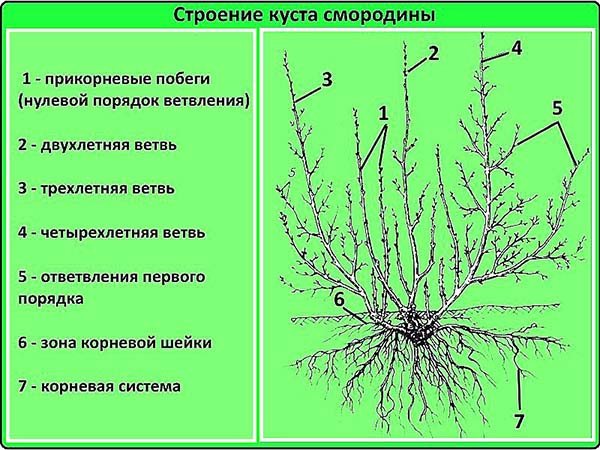

Description of technology


The instrument must be disinfected
There are several ways to trim, each with a specific purpose.
| Trim type | Features of the |
| Sanitary | It involves the elimination of all unnecessary processes - injured, dry, damaged by pests. Breaking branches with your hands, while leaving hemp, is strictly prohibited due to the emerging threat of the spread of rot |
| Rejuvenating | The main goal is to increase yields. The need is due to the ability of the plant to form the largest number of berries only on shoots about 3 years old. During the procedure, the old branches are completely cut down, which take away all the juices and powers of the currants for their life support. |
| Formative | Allows to achieve uniform fruiting and aesthetic appearance. One of the tasks is to prevent the spread of overgrowth beyond the already formed crown. Carried out throughout the life of the culture |
| Topping | Only suitable for black currants. It involves the removal of the upper parts with pruning shears to a length of up to 5 cm.It is carried out with a sanitary and anti-aging purpose |
In the fall, they do sanitary and rejuvenating currant pruning. Carry out exclusively sharpened and disinfected tools: pruning shears, garden saw and scissors.
Black currant pruning
In order for a haircut to bring benefits to the shrub and allow it to endure the winter without complications, they follow this scheme:
- The plant is carefully examined for the presence of disease-damaged and broken shoots, they are eliminated first.
- Too long branches located on the surface of the ground are cropped. The latter are shortened by 3-4 formed buds.
- Segments that are more than 3 years old are cut. You can determine the degree of maturity of the shoot by the color of the bark - over time, it becomes darker. Rejuvenation is carried out only after 5 years of the life of the bush. To do this, cut off the old branches at the base, having previously bent to the ground. If a stump has been left, the risk of pests affecting the currants increases, so it is recommended to prune it on a ring.
- Branches growing towards the center and thickening the crown are eliminated, as well as zero shoots and all new growth shorter than 15 cm. Unproductive segments are cut off completely or by 4 buds.
- Treat the wounds of cut bushes with garden pitch.
Often novice gardeners make a number of mistakes in caring for currants, the most common are the removal of tops or mass pruning of young shoots. As a result, the plant's immunity to diseases and productivity are significantly reduced.
It is important to adhere to certain rules regarding the age of the culture:
- In the first year, the need for an event is determined by the cultivated variety. Abundantly fruiting crops are pruned by a maximum of 20%, poor crops should not be adjusted.
- For 2 years, 3-4 powerful segments are left, sanitary and formative pruning is done.
- For 3-4 years, only the branches that require elimination are removed.
- Five-year-olds are sheared every season, keeping 2-3 shoots of different ages.
Red and white currant pruning
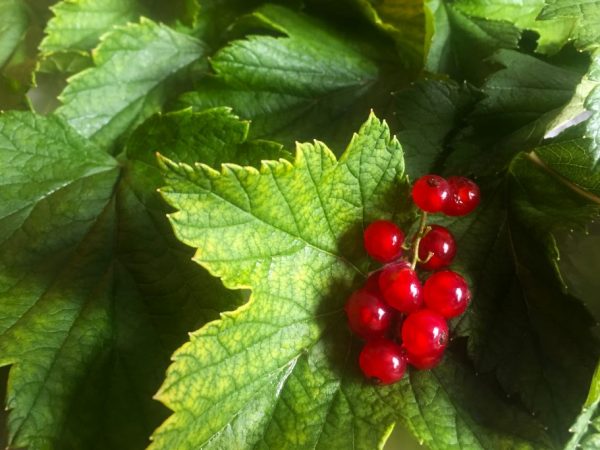

Red currants are pruned at 8 years of growth
Availability of tools
Knowing and applying the rules for pruning is essential, but it is equally important to use the correct pruning equipment. When buying, keep in mind that the tool should lie comfortably in your hand and be easy to sharpen.
Important! Store purchased pruning shears or hedge trimmers in a dry place. Disinfect the cutting edges before work and before working on each additional plant.
The inventory used depends on the thickness of the branches. So, for those whose diameter is less than 2.5 cm, use a pruner. The majority of currants have such branches. Attempting to cut larger branches with a pruner may result in a poor cut or damage to the tool. For branches with a thickness of 3 to 5 cm, a lopper is used.
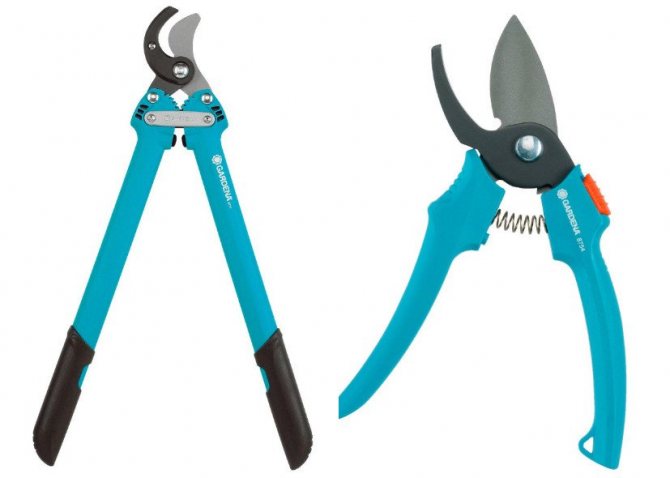

Cutting surfaces can do two types of action:
- scissor;
- shock (anvil).
In scissors, the thin upper blade slides alongside the thicker lower blade. These pruners are designed for cutting "living branches". The cut is smooth, without chipping. On an anvil tool, the sharp upper blade falls onto the thick lower base, chopping off a dry twig. Loppers differ from pruners not only in their function of cutting thick branches, but also in longer handles. They are convenient for cutting off branches that are high or deep in an overgrown bush.
Find out when and how to prune red currants.
The tool requirements will be the same:
- Check the sharpness of the blades before use. They must be well sharpened.
- Wipe the cutting edges with rubbing alcohol or a whiteness / water solution to decontaminate. Ratio: one part bleach to 9 parts water. Once you're done with one bush, disinfect the blades again.
- If you are just planning to purchase an instrument, then choose a copy with brightly colored handles that do not slip in your hand. This pruner will be easier to spot in the grass if you forget where you left it.


Clean and lubricate the tool regularly. Wipe blades and other metal surfaces with an oily cloth. Keep cutting edges sharp. Do not use the tool for other purposes, such as cutting wires.
Brief description of the currant bush
Before learning how to prune currants in the fall for novice gardeners, you need to understand the device, the features of the development and fruiting of this plant.
Currant is a perennial plant that, without proper care, turns into a shapeless mass for several years, stops bearing fruit and dies.
Only the optimal pruning scheme for currant bushes in the fall will rejuvenate the bush and return its fertility. Knowing the device of the currant bush and the pruning scheme, novice gardeners will be able to quite consciously and competently carry out the autumn pruning, refine and rejuvenate the plant, which, in response to care, will provide a bountiful harvest. A description of the plant and a pruning scheme for all types of currants in pictures can be found on the Internet.
The currant bush is a perennial plant that has many shoots of different ages. They appear annually from the ground, and after 15 years they die off. Different varieties differ in growth, bush shape, and the number of replacing shoots. The first shoots of replacement begin to appear from the age of 4, and then annually, up to 50 years. The economic life of fruit branches is 7-9 years for white, red and gold and 5-7 years for black currants. Over time, the shoots become overgrown with fruit formations, on which fruiting occurs. The main harvest occurs at 3-5 years of life of each shoot.
Bush formation methods
The classical cultivation method involves the formation of the type of a standard bush. It is suitable for novice gardeners.
However, there are a number of more bizarre plant forms that are gaining more and more popularity every year.
Standard currant
As a result of following this scheme, very attractive outwardly currant trees are obtained, especially impressive during the fruiting period:
- In the first year after planting, standard pruning is performed, while removing part of the growth to 1 bud facing outward.
- Six months later, all young shoots on the stem and zero shoots are eliminated.
- After 12 months, the entire growth is cut off on the main branches. The rest are shortened to 5 cm (then their size is increased to 10 cm).
- For the next spring, the side segments are cut to 3 cm, which are further trimmed to 25. In addition, too thick branches are removed.
Michurin method
A quite simple scheme recommended for use by novice agronomists, the essence of which is as follows:
- Bushes begin to cut off only from the 5th year of life, while removing half-diseased, injured and thickening shoots. After that, you need to feed the plant with fertilizers so that it can recover from stress faster.
- A year later, all branches are cut down, selecting and leaving 20 strong and fairly young segments.
- In the next season, cut down another half of the shoots, save only 10. Those specimens that are 5 or more years old are completely removed. Cut branches in injured places are covered with garden pitch.
On the trellis
The method helps to improve the quality of fruits due to the degree of yield. Despite the small amount, the berries grow large and have excellent taste characteristics.
Trimming currants under a trellis is carried out as follows:
- Immediately after planting, the lateral processes are shortened to 5 cm - this allows the buds to be transferred to the fruiting mode.
- Trim all branches on the soil surface without affecting the main trunk. If a plant has 2 or more central branches, the strongest is chosen. In the future, the root and segments close to the ground are removed.
Purpose of pruning a bush
Before proceeding with the operation, you should understand the purpose of this procedure. The pruning technique will be different depending on the tasks:
- Create the correct shape for the bush.
- Free the plant from diseased and broken branches.
- Create optimal conditions for the normal development of branches.
- Rejuvenate the old plant.
How to prune currants in the fallso that it grows and develops correctly, let's talk further. The formation of the bush must begin in the first years after planting the seedlings. It is on this that the qualitative development of the plant and its fruitfulness will depend.
When sanitary pruning remove all branches that have been damaged by harmful insects and various diseases during the summer season. As a result, a healthy bush will have higher yields.
After the procedure anti-aging pruning an adult bush releases new shoots and increases its productivity.
With any pruning method, mistakes should not be made, otherwise it will lead to diseases of the bush, uneven development and a poor harvest.
Tools for pruning currants in the fall
To prune the branches of the shrub without problems, you should use various tools:
- Hacksaws - cut thicker branches well, but their teeth should be small.
- Secateurs - used for branches of different sizes, one-sided or double-sided secateurs can be used.
- Loppers - have long handles, thanks to which pruning can be done in hard-to-reach places.
- Brush cutters - cut thin and sore twigs, this tool is also used to shape the bush.
- Garden knives help to cut branches evenly.
Whichever tool you choose, check:
- sharp blades;
- ease of use;
- weight;
- safety.
Tool
For pruning, it is important to prepare a special garden tool - a pruner. Its blades should be sharp and the handles should be comfortable. Remember, working with a faulty or blunt tool can cause injury. If there are thick perennial branches on the bush, then a saw will not hurt.
Tip: It is advisable to trim with protective garden mittens.


Interesting: Create supports for currants
Follow-up care
With the onset of autumn, part of the foliage is still preserved on the currant bushes, so the spread of diseases and harmful insects should be prevented. To do this, use Bordeaux liquid at a concentration of 1% to process the green mass of the bush. Do not neglect the cleaning of the waste remaining after trimming. Additionally, the surface of the substrate in the near-stem region is loosened with a pitchfork or a rake, stepping back about 20 cm from the base. This allows the supply of the required amount of oxygen to the root system.
To achieve maximum efficiency when loosening, a potassium-phosphorus mixture is embedded in the soil. It is also allowed to dig in rotted manure around the perimeter at a distance of 30 cm from the plant.
Care after the procedure
After the shrub was cut in the fall, the following work should be done:
- Top dressing;
- watering;
- preparation for winter.
Remove fallen leaves and old branches from under the bush and burn. Dig up the soil no deeper than 7-8 cm, so as not to damage the roots.
Many gardeners ask how you can feed your plants after pruning? The answer is that you can use any fertilizer except those that contain nitrogen.
After these works, watering is carried out strictly at the root. 3-4 buckets of water are poured under the young shrub, twice as much water is poured under the older one. But it should be taken into account what the weather is like. If autumn is rainy, then the rate should be reduced by 2-3 times.
In order for the bush to survive the winter well, it is necessary to pour soil mixed with rotted manure under it. Top the soil can be sprinkled with foliage or sawdust. But in the spring, remove them so that the earth is warmed by the sun.
After these works, spray the plant with 3% Bordeaux liquid... This will help prevent fungal infections.
In areas with very cold winters, the bushes are grouped by collecting in a bunch, covering them on top with boards with bricks. They are also buried in earth or snow.
Note! Do not use iron and plastic wrap for shelter. Iron will freeze the plant, and suffocate under the film.
Carrying out all the work correctly, at the right time - in spring or autumn, you can extend the life of the shrub for several years and get a large harvest of delicious berries every summer. Also, autumn work will allow the plant to survive the winter comfortably, without damage.
Scheme of pruning currants in the fall
It is necessary to remove branches from the base, all those that are more than five years old.
Cut off young branches that are not yet a year old.
Cut off shoots for grafting. Before winter, they have the ability to root well.
We remove all lateral, transverse branches, all this will shade the main shoots.
Do not cut the tops of the main branches that you left. It is necessary to remove them only when they are struck by anthracnose, aphids or a tick. The presence of a tick is indicated by thick buds, and twisted leaves about aphids or anthracnose. Thin and young fragile shoots are also removed, since they will definitely die themselves from cold and frost.
What exactly needs to be cut
Remember to trim the black currant correctly. That is, not just chaotically removing long or unsympathetic branches, but removing the following shoots:
- Affected by ticks, aphids;
- With signs of moss, mold on them;
- Dry, rotten branches;
- Curved, curved shoots;
- Branches growing deeper into the bush or lying on the ground (or they will have to put props);
- Shoots over 4-5 years old. You can distinguish them by their appearance. More often, such branches have a larger diameter in comparison with the rest, dark (almost black) bark. Sometimes mosses, lichens, and mold are present on them. In young twigs, the bark is more elastic, thin, light.
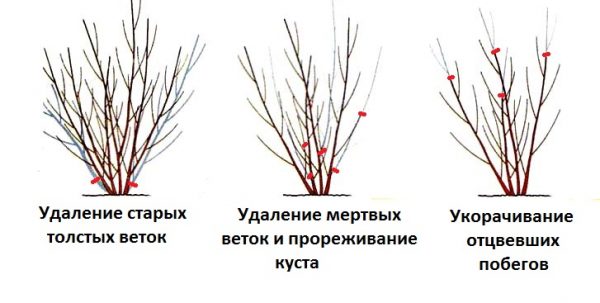

Young shoots are also subject to removal. But not all of them delete them. You need to leave 3-5 pieces to form a good bush.


It is necessary to remove all unusable shoots under the very foundation.
Advice: if, when pruning, you shortened a branch and noticed that it was struck by a glass (inside it has a black cavity), you need to completely cut off such an shoot to the very base.
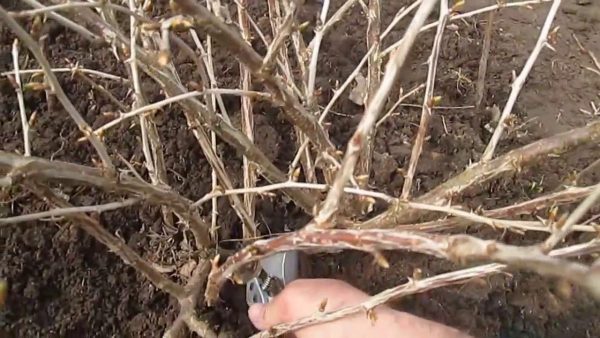

Interesting: How to cut cucumbers in a greenhouse
Processing an old bush
It will not work to rejuvenate an old plant in one procedure. This process should take 2-3 years, but improvements will become noticeable in a year..
The bush should be examined closer to the roots in order to better identify old, diseased shoots that need to be removed and burned.
Expert opinion
Ulanin Konstantin Grigorievich
Agronomist, work experience in the specialty - 12 years
Remove old shoots more than 5-6 years old. But, if such a shoot has a growth of 10-15 cm, then leave it. If all shoots are very weak, then cut them to the strongest lateral branch. And the next year, when young, strong shoots grow for replacement, the old ones can be removed, but this should be done in the fall. You need to cut off at a level not more than 3 cm from the ground. Otherwise, branches will grow out of them, which will only interfere and take away nutrients. Branches that lie on the ground or grow inside the bush should also be removed.
After several procedures, the bush will consist of 15-20 fruitful shoots, 2-4 years old... Each fall, they need to be shortened at the branches, leaving 2-4 buds.
Shoots over 50 cm, cut off the upper part so that the lateral shoots develop better. The emerging young shoots are examined. Of these, 3-7 stronger ones are left, the rest are removed.
Pruning methods
In order to determine the type of cutting currant, you need to consider:
- The age of the bush;
- what time is the procedure;
- the purpose of the trim.
Next, we will tell you about the main types of pruning, you will need to choose one or more types that are right for you. The material contains a diagram and step-by-step photos, so our instructions are suitable even for beginners.


The easiest way
This approach will not require determining the age of the branches. If you are a beginner gardener, you can remove all branches that have grown by less than 15 cm during the season..
If you still have questions, we recommend watching the video, perhaps this will make it easier for you to understand which branches should be deleted.


Radical
It is carried out if the yield has dropped significantly. This procedure is performed both in spring and autumn. When radical, the entire shrub is cut at a height of 3 cm from the soil level... The soil is fertilized.
This action allows new shoots to grow freely. After a while, the currants will again begin to delight with a bountiful harvest.
After pruning, only hemp remains from the bushes, as in this photo:
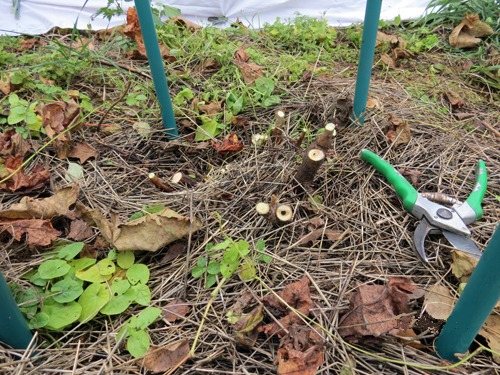

Radical currant pruning
Sanitary
It is advisable to carry out this procedure in the spring, until the buds have blossomed in full force.... So it will be noticeable which branches are damaged and the buds do not bloom on them. They are removed.
Frozen shoots are cut to a healthy part. On poorly growing shoots, to stimulate branching, pinch the upper bud.
Further, we tried to show you in pictures how to carry out such processing.
Rejuvenating
It has been held every autumn since the sixth year. When rejuvenating, 1-2 sprouts are removed under the base, which give little or have ceased to bear fruit.
Young shoots are also cut if they have few fruit twigs and do not grow well. Those affected by diseases or pests growing inward are also removed.
When carrying out this event, it is important to pay attention to the number and strength of the fruit twigs. Old shoots with high yields rejuvenate.
They are cut to the nearest strong branch. The cut is made at an angle towards the left branch so that the stump from the cut is small.
We advise you to read: where is it better to plant different varieties of currants.
Forming (or molding)


Carried out three years after planting seedlings, in the fall.
With weak growths, no more than 5-7 cm, a strong pruning is carried out.
All weak branches are removed, and 2-3 buds are left on the remaining ones.
In the event that the growth remains weak again, the bush is dug up.
Such a plant will not give large yields.
To form a full-fledged bush, starting from the third year, all shoots are cut off, leaving only 3-4 of the most powerful root shoots. Then, on these shoots, diseased, damaged shoots are removed. After those that grow inward. There will be no berries on them anyway.
Young growth is cut off last. If you do not carry out the procedure, then the stems will cease to form fruit branches. The stems are cut away from the bud up to about 6 mm.
Two years after the first event, 3-4 root shoots grow, with good growth. If the growth is too large, the sprout is cut into 2-3 buds.
3-4 years after the first removal, there should be from 8 to 12 powerful basal shoots... The growth is shortened every autumn.
At the end of the fourth year, if all the work was done according to all the rules, the bush should have 10-15 basal shoots of different ages. This will ensure high yields.
Pinching the top
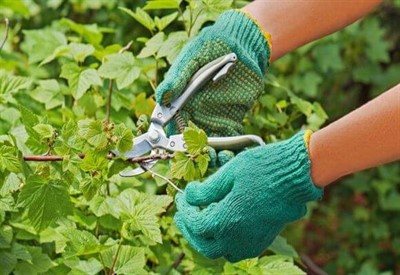

This action increases the yield. Its other name is pinching.
The most important thing is to pinch on time, according to the rules, only then the desired result will be achieved.
Pinching (pinching) rules:
- The procedure is carried out in early August, do not delay, wait for the end of the month. Only young shoots are subject to pinching.
- The pinching is carried out after a few days to give the bush a break after the sanitary pruning. During the break, the bush is fertilized, watered, and the soil around the bush is loosened.
This will help the currants recover faster after pruning and prepare for pinching. Pinching is carried out in the morning, the weather should be dry and calm. - 1-2 buds are cut from each branch from skeletal and root branches, about 2-5 cm.
- Remove the top along with the leaves and stem.
- It is advisable to carry out pinching not with gloves, but with bare hands, after thoroughly washing them so as not to infect. The stalk of the apex is taken with the index and thumb, twisted, and abruptly pulled off.
Red currant pruning: goals and effects on fruiting


The rules for pruning red currants are different from the rules for pruning black
Every year, many shoots appear from the rhizome, which grow and create additional shading. Old branches do not allow young ones to develop. If you neglect pruning, the fruits become small and sour, the yield drops sharply. The operation can be performed in the spring, but it is preferable to do it in the fall, taking into account the peculiarities of the vegetative period of the currant.
The procedure allows you to control the growth, form the crown, rejuvenate and heal the plant. In the absence of extra branches, the plant directs all its forces to the development of a brush with berries.
Cropping produces the following results:
- The yield increases, the fruits become large.
- The illumination of the bush is improving. As a result, the berries will be sweet, the content of nutrients in them will increase.
- The bush looks well-groomed.
- The growth of young shoots is stimulated, from which fruiting shoots are subsequently formed.
The operation is carried out around the middle of October, after all the foliage has fallen off.
Experienced gardening tips
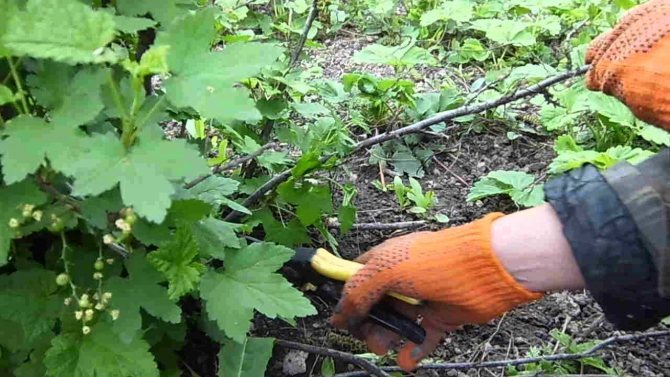

Without pruning the bush, you should not wait for a rich harvest of currants.
The recommendations of experienced colleagues will help novice gardeners to avoid mistakes:
- Not only adult shrubs need pruning, but also young seedlings.
- Extra shoots should be removed at ground level. This method stimulates better lighting of the bush, which will lead to higher yields.
- Even for a small shrub, no more than 5 branches should be left. From this amount, new strong shoots are formed.
- The procedure is recommended to be performed no later than mid-October so that the currants are not damaged by frost.
Best time to prune: fall or spring
For novice gardeners, the question of the season of work remains open. Some are inclined towards spring pruning, others towards autumn. In principle, both options are valid. But it is important to take into account that in the spring you need to try to be in time before the inflow of juices to the ovaries. That is, pruning must be done literally as soon as the snow melts. If you complete the work a little later, at the moment when the juice is already in full swing (and this happens in March-April), you will cause irreparable harm to the bush. The plant will “lick the wounds” for a long time and will begin to bear fruit later than usual. In addition, the number of berries will be less.
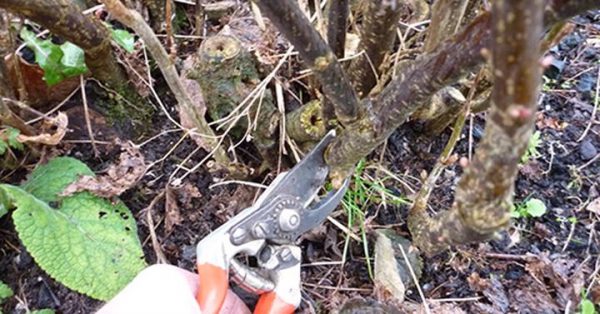

Currant pruning
There is much more time for safe pruning with a gardener in the summer after harvest or in late fall. Then you can do the whole amount of work, and in the spring you can watch its result.
Advice: do not wait until very late autumn, so as not to affect the period of movement of juices. Better to do the autumn pruning of the bush in late September and early October.
